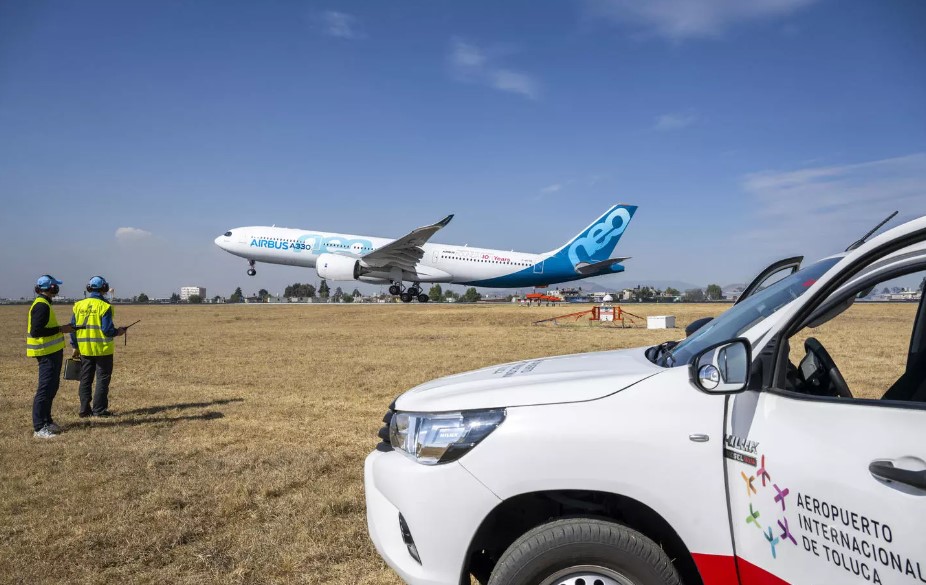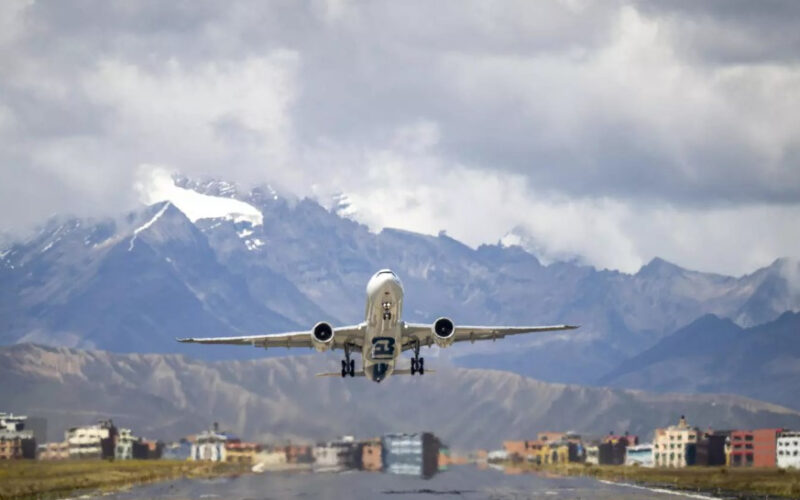Airbus has revealed that its A330-900neo test aircraft, registered F-WTTN, has recently successfully completed a special series of ‘hot and high’ tests in Mexico and Bolivia. The test flights, performed over two weeks during March 2024, were designed to prove aircraft and engine performance in high-altitude, warm, and humid airport environments.
The test program took place in two locations specifically chosen for their unique ‘hot and high’ credentials – Toluca in Mexico, followed by La Paz in Bolivia. Toluca Airport (TLC) lies at an altitude of 9,186ft (2,800m), while La Paz Airport (LAP) is located at 13,300ft (4,054m) above mean sea level.
Airbus has sent previous test aircraft to Bolivia, as the country’s extremely hot climate and high altitude are ideal for testing the design limits of its aircraft under such challenging operational conditions. The flights in both Mexico and Bolivia form just part of Airbus’ incremental envelope extensions for the A330neo.
The main objective of the test program is to expand and certify the wide range of airports from which the A330neo can operate. This is of some importance for the company, as it helps to demonstrate the type’s operation capabilities to those airlines that either operate to or are based in hot and high environments.

To date, the A330neo has only been certified to operate at airports that are up to 8,000ft (2,438m) in elevation. However, following certification approval for hot and high operations, which is expected in Q1 2025, the aircraft will be able to serve airports that are up to 12,500ft (3,810m) in elevation. Potential locations that could then see A330neo service include airports in China, Tibet (Lhasa), Central and South America (such as Bogota, Toluca, Quito, and Mexico), and in Africa (such as Addis Ababa, Ethiopia).
The primary focus of the tests conducted by Airbus was the evaluation of take-off and landing performance. This is vital for any aircraft, as operating at increased altitude reduces engine thrust levels, crucial for establishing take-off performance. The A330-900neo testbed also conducted local flights to evaluate climb and approach performance.
According to an Airbus statement, other tests included “multiple engine starts, system behavior verification, low-speed taxi and rejected take-offs”. In the case of the engine starts (which are seen as a crucial part of overall performance in such environments), the tests included special instrumentation installed onboard the aircraft to measure the starter air pressure, which can often be adversely affected by high airport altitudes.
The test flight series involving F-WTTN took place between March 18 and 30, 2024, although the results of the program have only now been revealed. According to Airbus, a team of around 40 specialists took part, participating in the planning, logistics, maintenance, local liaison (airports, ATC, authorizations and permits), test support, execution and analysis activities, as well as the flying of the airplane itself.
Airbus has stated that “the early test results already reflect the good performance and behavior of both the aircraft and its Rolls-Royce Trent 7000 engines”.
Captain Franck Busnel, Airbus’ mission leader and one of the test pilots involved in the hot and high certification program, said: “By extending the envelope of operation of the A330neo, which was successful, we can show to the operators, the current ones or the new ones, that the aircraft reaches the same capability of the A330ceo in terms of high-altitude operations, but with the added advantage that the A330neo is much more fuel efficient.”

